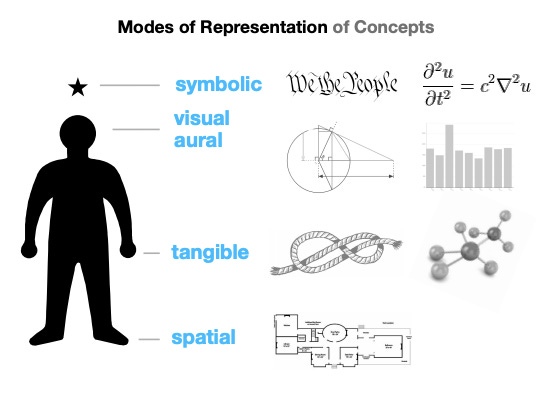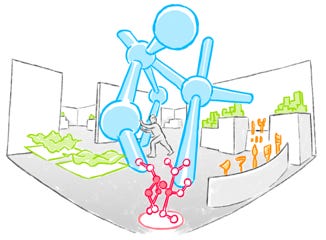A More Humane Representation of Thought
As a culture, we’ve contorted ourselves around the limitations of our static mediums.

Bret Victor is a visionary user-interface designer and computer scientist. Among other accomplishments, he was part of the small group of people who worked on the initial design for the iPad.
I recently came across his 2014 talk The Humane Representation of Thought and the ambition of his vision blew me away.
Victor makes the provocative argument that reducing the human experience to sitting at a desk, staring at a rectangular screen, and mashing a keyboard is unethical. It’s unethical in the same way that limiting the freedom of a dog by keeping it in a cage all its life is unethical.

As humans, we are capable of many sensory modalities (tactile, spatial, aural, etc.) but we spend most of our adult lives limited to symbolic representations like language and mathematical notation. Victor sees this unfortunate reality as debilitating and wasteful of the vast human potential.

As a culture, we’ve contorted ourselves around the limitations of our static mediums. Even though we have powerful computers, we largely use them to emulate and extend static representations from the era of paper (think PDFs and emails).
Victor proposes a dynamic medium of thought that:
- fits the human instead of deforming the human to fit the medium
- externalizes as much thought as possible - an external imagination
- enables show and tell, or depiction rather than description
He believes that by upgrading the forms of external communication, we can enable more powerful internal representations, which enable more expansive thoughts.
In total, Victor explores 13 different proposals. I’ll briefly highlight a few of them:
Dynamic Reading
A reading medium that is transformable, explorable, context-sensitive.
With a better form of writing, concepts that today take hours to understand can be understood in seconds.

Dynamic Environments-To-Think-In
Thinking with the whole body, not just staring at screens.
A spatial environment with the flexibility and responsiveness of a computer screen.

Dynamic Library
A library is a walkable environment for browsing and discovering knowledge.
The branches of knowledge are represented by distinct areas that feel inviting, approachable, and tempting, like the lands at Disneyland.

If you’re curious about his other proposals, check out this visual summary of his work.
Friday Brainstorm Newsletter
For more, join 300+ curious people subscribed to the Friday Brainstorm newsletter. It’s one email a month with the most interesting ideas I've found related to science and health.